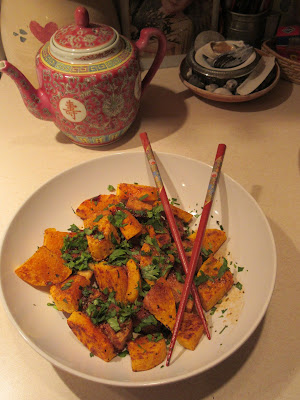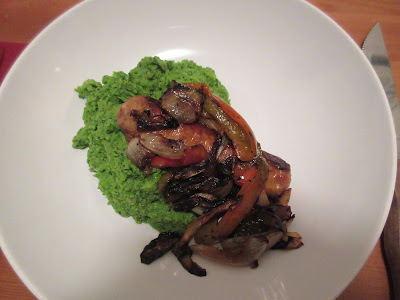| With apologies to U Chicago Press, whose image I am using. |
So I was involved in CNY for Bernie, based in Hamilton, in the couple of months before leaving, although peripherally, since I knew I was leaving. I was also in touch with a group in Baldwinsville, NY, and like to think I helped inspire them to get their group off the ground.
Volunteering for Bernie, it turns out, is do-it-yourself, at least at this point in the campaign. Nobody from the campaign (still thinly staffed outside IA & NH) will tell you what to do, organize events, or lead. You have to be the change you've been waiting for, and lead yourself.
Arriving in CVA (as I've gathered the Charlottesville region is known), Jasmine & I attended our first Bernie event just three days later, a Happy Hour at the local bar Firefly. We met a number of enthusiastic Bernie supporters, including some students half our (my) age or younger, and a number of other enthusiasts from local activists to entrepreneurial pet-sitters to old-hands of VA politics known to chew the fat with the likes of Bob Goodlatte.
Arriving in CVA (as I've gathered the Charlottesville region is known), Jasmine & I attended our first Bernie event just three days later, a Happy Hour at the local bar Firefly. We met a number of enthusiastic Bernie supporters, including some students half our (my) age or younger, and a number of other enthusiasts from local activists to entrepreneurial pet-sitters to old-hands of VA politics known to chew the fat with the likes of Bob Goodlatte.
One fascinating dynamic, though, common to both groups, is how hard it is to run a meeting. In fact, as an outsider trying to participate without elbowing my way in, it was clear that these group, full of goodwill and energy, and a lot of fellow-feeling, have as many impediments to administrative accomplishment & efficiency as any department or program at Colgate University!
Having cogitated at length upon (not to mention contributed to) the function & dysfunction of multiple such committees at Colgate, I often thought to myself, "Well, this must be so dysfunctional because we're a bunch of professors; how can we hope to achieve administrative functionality and positive group dynamics when they are the very things that are dis-incentivized by academia." But if this is true, then a sample of academics should perform much worse administratively than any randomly-met group of individuals. But two such (in CNY & CVA) randomly drawn groups (selected purely on being pro-Bernie) seem to evince the same difficulties, of getting hung-up on the short term, or even terminologies, sidetracked by emotional commitments, failure to listen to each other, tendency to speak out of a feeling of needing to speak, rather than to move the group towards a goal, and oversensitivitiy to "authoritarian" leadership tendencies in running a meeting, among others.
This presents a dangerous power imbalance in society: if groups of citizens met for bringing change to a politics that serves the status quo; groups of academics who devote themselves to wisdom & expertise in fields that could serve society; or other collections of individuals not already part of the power-structure of the managerial class (which extends from government through private business, higher education, and even established NGOs and non-profits) cannot get their act together and organize themselves, then the organizations of that power-structure will never face the kind of challenge that can hold them accountable.
This is true of university administrations vis-à-vis faculties, workers vis-à-vis employers, union members vis-à-vis union leaders, HOA or Condo Association members vis-à-vis their boards, and of course, citizens vis-à-vis their governments, not to mention a plethora of other cases where the advantages of the already-empowered are amplified by their fewness in number and honed administrative experience.
Having cogitated at length upon (not to mention contributed to) the function & dysfunction of multiple such committees at Colgate, I often thought to myself, "Well, this must be so dysfunctional because we're a bunch of professors; how can we hope to achieve administrative functionality and positive group dynamics when they are the very things that are dis-incentivized by academia." But if this is true, then a sample of academics should perform much worse administratively than any randomly-met group of individuals. But two such (in CNY & CVA) randomly drawn groups (selected purely on being pro-Bernie) seem to evince the same difficulties, of getting hung-up on the short term, or even terminologies, sidetracked by emotional commitments, failure to listen to each other, tendency to speak out of a feeling of needing to speak, rather than to move the group towards a goal, and oversensitivitiy to "authoritarian" leadership tendencies in running a meeting, among others.
This presents a dangerous power imbalance in society: if groups of citizens met for bringing change to a politics that serves the status quo; groups of academics who devote themselves to wisdom & expertise in fields that could serve society; or other collections of individuals not already part of the power-structure of the managerial class (which extends from government through private business, higher education, and even established NGOs and non-profits) cannot get their act together and organize themselves, then the organizations of that power-structure will never face the kind of challenge that can hold them accountable.
This is true of university administrations vis-à-vis faculties, workers vis-à-vis employers, union members vis-à-vis union leaders, HOA or Condo Association members vis-à-vis their boards, and of course, citizens vis-à-vis their governments, not to mention a plethora of other cases where the advantages of the already-empowered are amplified by their fewness in number and honed administrative experience.
But in the words of E. E. Schattschneider, "The only defense against organization is counterorganization" (Party Government, 1942; p. 44). In truth, this is no more or less than a call for Americans (or anybody) dissatisfied with a status quo that seems not serve the common good to return to the roots that Tocqueville found when criss-crossing this country in the early 19th century:

Tocqueville found that everywhere in America, groups of citizens were always organizing and learning how to run a meeting, how to work together in a group over time, how to act collectively. Even the most Rugged Individualists in what were then the "western" states would get together and discuss, work in groups, solve problems, and advance collective goals. The only cure for not knowing how to run a meeting is to keep holding meetings and try to learn how to run them better--or identify someone with the knack for it, and help them learn.
Unfortunately for Democracy in America, today in this country so many of us are so busy with our own individual or family demands, desires, and responsibilities, that hardly anybody wants to join groups that hold regular meetings anymore. We're happy to send checks (or simply donate online) to the social causes or political campaigns we support, but this does not teach us the skills to actually enact democracy--it is not participation.
Tocqueville worried that democracy in any country might lead to tyranny and violence, as it had in Revolutionary France. The rare genius of America that he found was that so many citizens were involved in enacting democracy, practicing citizenship, so that those who made it to the top could be restrained by masses of educated, activist, and administratively well-versed citizens who themselves committed to holding the powerful accountable. These were not the masses of Europe who transformed into mobs bringing a bloody dictator like Napoleon Bonaparte to power (Vladimir Lenin? Mao Zedong?).
Today, we have dissatisfaction with leadership in both our political parties, and in other spheres of the society, as well. But how much of it inspires the patience and self-sacrifice of . . . going to meetings? It seems all too little--much more goes into the shouting, posturing, and anger that could bring an American Napoleon to power--perhaps Donald Trump?

Tocqueville found that everywhere in America, groups of citizens were always organizing and learning how to run a meeting, how to work together in a group over time, how to act collectively. Even the most Rugged Individualists in what were then the "western" states would get together and discuss, work in groups, solve problems, and advance collective goals. The only cure for not knowing how to run a meeting is to keep holding meetings and try to learn how to run them better--or identify someone with the knack for it, and help them learn.
Unfortunately for Democracy in America, today in this country so many of us are so busy with our own individual or family demands, desires, and responsibilities, that hardly anybody wants to join groups that hold regular meetings anymore. We're happy to send checks (or simply donate online) to the social causes or political campaigns we support, but this does not teach us the skills to actually enact democracy--it is not participation.
Tocqueville worried that democracy in any country might lead to tyranny and violence, as it had in Revolutionary France. The rare genius of America that he found was that so many citizens were involved in enacting democracy, practicing citizenship, so that those who made it to the top could be restrained by masses of educated, activist, and administratively well-versed citizens who themselves committed to holding the powerful accountable. These were not the masses of Europe who transformed into mobs bringing a bloody dictator like Napoleon Bonaparte to power (Vladimir Lenin? Mao Zedong?).
Today, we have dissatisfaction with leadership in both our political parties, and in other spheres of the society, as well. But how much of it inspires the patience and self-sacrifice of . . . going to meetings? It seems all too little--much more goes into the shouting, posturing, and anger that could bring an American Napoleon to power--perhaps Donald Trump?




















